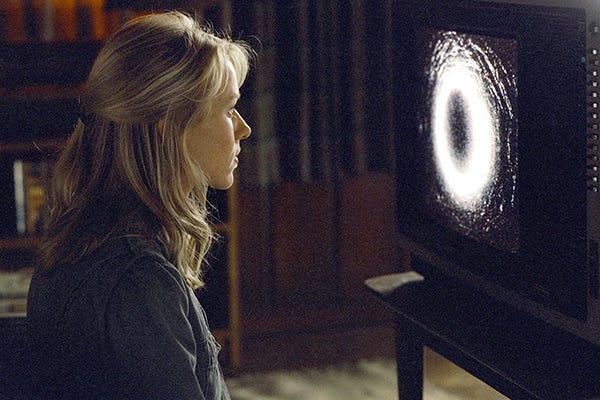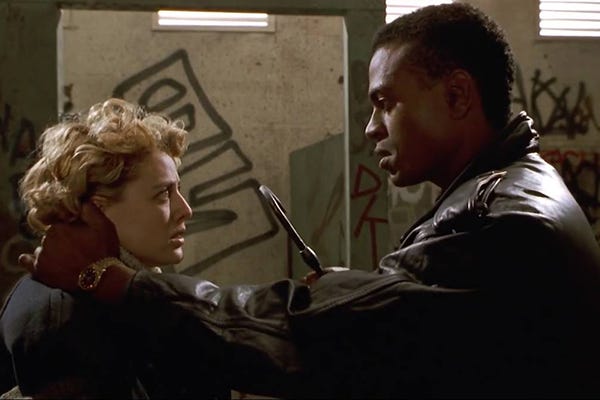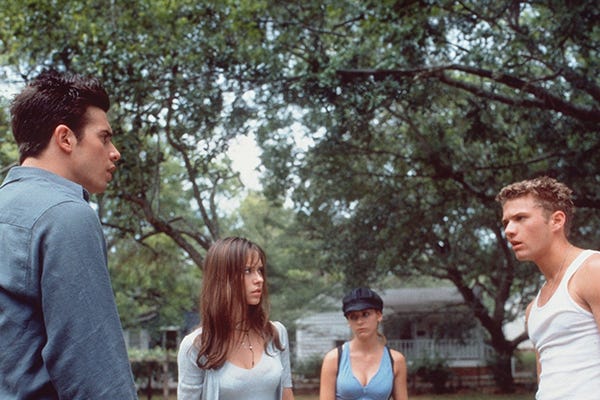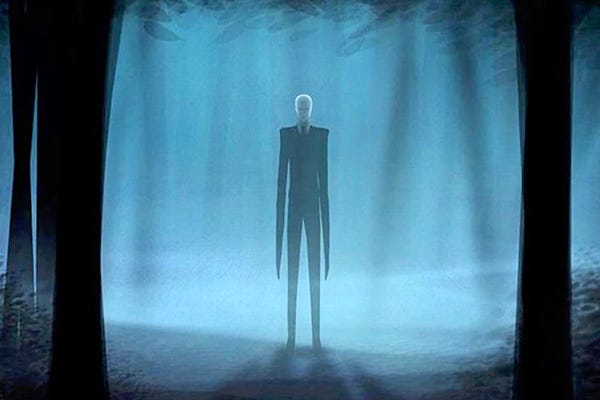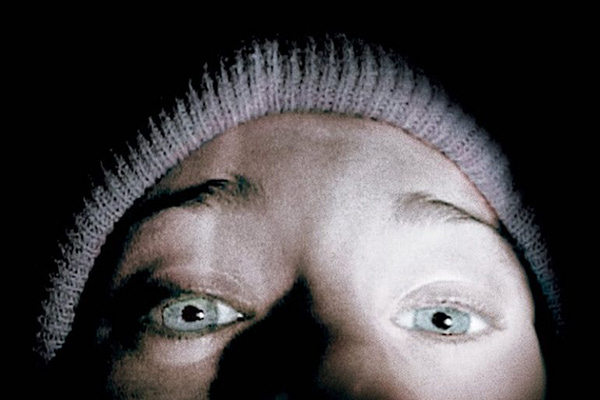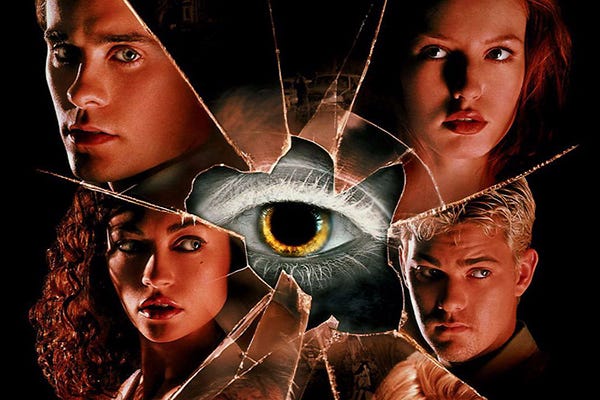Fact or Fiction: The Urban Legends That Inspired the Creepiest Horror Movies
Seven scary movies that play on our biggest fears about maybe-true stories
What makes a scary movie extra creepy? We would argue it’s the specter of truth: that something bad or spooky can happen because we heard it happened for real somewhere. Enter: urban legends. Stories are passed down through generations—they always have been. And sometimes unexplained rumors of something that happened to someone somewhere can gain powerful momentum if enough folks keep those stories alive with new details and new audiences. Urban legends play on our biggest fears of the unknown: that something sinister could be lurking in a place or situation we otherwise feel safe in. But they’re also fantastic jumping off points for movies and more stories. We pulled together a list of some of the creepiest movies based on or surrounding urban legends—just in time for your Halloween watch party viewing pleasure!
1. The Ring
The 2002 movie The Ring, inspired by the Japanese horror film Ringu (itself inspired by the 1991 novel Ring by Koji Suzuki) relies on the urban legend of a cursed videotape that, when watched, leads to the viewer’s death seven days later unless they can solve the mystery surrounding it. This concept of a cursed video or image leading to doom is linked to several urban legends, but one of the most prominent is the Japanese kuchisake-onna (Slit-Mouthed Woman) legend where a vengeful female spirit appears with a disfigured face and asks potential victims if they find her beautiful. Depending on their answer, she either kills them or harms them. The Ring urban legend plays on the broader concept of a jinx or cursed media, where engaging with specific content (like a tape, or photo) has a supernatural consequence. The idea of cursed objects or communication causing death has a long history in folklore worldwide, ranging from cursed paintings to cursed phone numbers. The cursed videotape in The Ring serves as a modern adaptation of these older legends.
2. Candyman
Have you ever been at a sleepover and gathered with friends in the bathroom to chant “Bloody Mary” while staring into the mirror? …Just us? Well, the 1992 horror film Candyman is based on author Clive Barker’s short story The Forbidden, but it is heavily influenced by urban legends, particularly “Bloody Mary.” In this story, however, the ghost of a hook-handed man appears when someone says his name five times in front of a mirror. (It’s giving Beetlejuice.) This directly, ahem, mirrors the Bloody Mary game, in which a spirit is said to appear when her name is chanted multiple times while looking in a mirror. Both legends involve summoning a deadly supernatural entity through a ritual, usually a dare. Candyman also has another important element that often goes hand in hand with urban legends: the theme of racial violence and injustice. The backstory of the Candyman character is that he was a Black artist named Daniel Robitaille, who was brutally lynched in the late 19th century for having a romantic relationship with a white woman. He was tortured by having his hand cut off and replaced with a hook, and this racially charged backstory makes Candyman a complex blend of horror and commentary on the historical mistreatment of Black people. The setting of the film further digs into the often unfair and racially charged fears and anxieties of urban life, including poverty and crime.
3. I Know What You Did Last Summer
Based on Lois Duncan’s 1973 novel of the same name, the 1997 slasher film, I Know What You Did Last Summer, is inspired by a famous urban legend. Often referred to as “The Hook” or “The Hookman” the legend features a hook-handed killer who stalks and attacks young couples, often parked in a secluded, “lover’s lane” area. A couple hears a news report on the radio about an escaped mental patient or killer with a hook for a hand. They become frightened and decide to leave the area, only to later discover a hook hanging from the car door, suggesting the killer was recently nearby. The story plays on fears of vulnerable teens being attacked in isolated locations.
In I Know What You Did Last Summer, a group of teenagers accidentally hit a man with their car and, thinking he’s dead, dispose of the body. A year later, they begin receiving threatening messages from someone who says they know what they did and soon begin being stalked by a killer wielding a hook. The movie expands the original urban legend, but the origin is still there.
4. Slender Man
Born from a modern urban legend that originated in the digital space (as opposed to urban legends that are passed down through stories over decades), the Slender Man was created in 2009 by Eric Knudsen (alias “Victor Surge”) on the online forum Something Awful. It quickly took on a life of its own and became an internet myth, gaining widespread influence as other users contributed additional stories, artwork, and videos to the character’s lore. Slender Man is typically depicted as a tall, thin figure with a featureless white face and tentacle-like appendages. He is often shown wearing a black suit, and he stalks, abducts, or influences children and teens, leading them into forests or causing them to act irrationally. The character’s lack of distinct features makes him especially unsettling, and he has become associated with psychological horror and the idea of losing control to a mysterious force.
The 2018 movie Slender Man is about a group of teenage girls who summon the Slender Man through an online ritual and then find themselves haunted by him. The film taps into fears around the dangers of the internet, how myths and memes can spiral into something terrifying, and how they can influence vulnerable minds. In a tragic real-life twist, this urban legend was also tied to a real-life incident in 2014, when two 12-year-old girls in Wisconsin stabbed a classmate in an attempt to appease Slender Man, believing that they would become his proxies. While the film does not directly address the crime, the real-world implications of the Slender Man legend added an additional layer of creepiness to the character.
5. The Mothman Prophecies
The 2002 film, based on John Keel’s 1975 book of the same name, The Mothman Prophecies was inspired by real-life events and an urban legend surrounding the mysterious creature known as the Mothman. The legend originates from sightings in the small town of Point Pleasant, West Virginia, during the mid-1960s. Keel’s book explores his investigations into the sightings and their possible connection to supernatural phenomena and tragic events. In 1966 gravediggers in Clendenin, West Virginia, claimed to have seen a large humanoid figure with wings flying overhead and two young couples reported seeing a man-sized creature with large wings and glowing red eyes who could fly at incredibly high speeds and follow their car as they fled the area. Over the next year, many residents of Point Pleasant reported sightings of the Mothman, and in some cases, witnesses experienced feelings of dread, anxiety, or paranormal events after encountering the creature.
In 1967, the Silver Bridge, which connected Point Pleasant to Ohio over the Ohio River, suddenly collapsed, killing 46 people. The collapse was attributed to a structural failure, but many locals believed that the Mothman sightings were an omen predicting the disaster, and after it happened there were less reports of Mothman sightings. In the movie, a journalist, played by Richard Gere, investigates the strange sightings and prophetic warnings in a small town. Using the real-life reports and the Silver Bridge disaster as a backdrop, the film amplifies the eerie idea that the Mothman may be a supernatural being or entity that foreshadows catastrophe, weaving elements of mystery, paranoia, and the unexplained into the narrative.
6. Blair Witch Project
This 1999 movie wasn’t based on an urban legend per se, but it used the idea of urban legends and folklore to scare viewers. Also? The filmmakers created and disseminated a fictional urban legend of their own—to promote the film, of course. Early internet culture helped to make their fictional legend seem real: the filmmakers created a website that presented the Blair Witch story as genuine folklore, complete with fake newspaper articles, journal entries, and “missing person” reports about the disappearance of the film’s protagonists. This viral marketing campaign, which blurred the line between reality and fiction (how quaint to imagine this in modern day!), smartly mimicked the way urban legends spread in the modern age, using the internet as a new medium for word-of-mouth. The legend in the movie was designed to feel like an authentic, ancient myth, and the film cleverly presents it as if it were real, using a “found footage” style to add to the illusion of authenticity. In it, three student filmmakers—Heather, Josh, and Mike—venture into the woods near Burkittsville, Maryland in 1994 to make a documentary about the Blair Witch legend.
According to this fictional lore, which we see play out in The Blair Witch Project, the Blair Witch is a vengeful spirit tied to the town of Burkittsville (formerly called Blair). The legend spans centuries, beginning with the story of Elly Kedward, a woman accused of witchcraft in 1785 and banished to the woods after children accused her of luring them to her house to draw blood. Kedward was presumed to have died in the wilderness, but soon after her disappearance, the townspeople began to vanish, and the remaining villagers abandoned Blair, convinced that the area was cursed. The legend suggests that Kedward's spirit, known as the “Blair Witch,” haunted the woods around Burkittsville, causing mysterious disappearances and deaths over the years. The legend goes further, citing the abduction of a group of children in the 1940s by a man named Rustin Parr who killed them in his cabin, claiming that the Blair Witch made him do it. All of this lore adds to the realness of this fake documentary-style movie, and it even fooled some audiences into believing that the legend really existed.
7. Urban Legend
Finally, the 1998 horror film Urban Legend illustrates exactly why urban legends are excellent fodder for a scary movie. Set on a college campus, a series of gruesome student murders start happening–and they seem to reflect commonly known urban legends. Indeed, the killer in the film uses these legends as inspiration for creative killings, and the plot heavily relies on the audience recognizing these myths. Among the common urban legends depicted are the lover’s lane hookman (very I Know What You Did Last Summer), a killer hiding in the backseat waiting to strike, the call coming from inside the house, the Bloody Mary myth, pop rocks and soda combo death, flashing headlight gang initiations, kidney heist/organ theft, and more. The film helps perpetuate these urban legend fears, and that of course makes it easier to build a franchise of sequels! But one thing is made clear: urban legends will always be passed from generation to generation, and like story tropes, serve as endless inspiration for creators of thrilling content.
Want more? Our Discord is where you’ll find tons of other fans there chatting in our forums about the books, TV shows, movies, music, and games we all love! Don’t forget to follow us on Instagram, tumblr, and Spotify for more fandom content—and hit that subscribe button so you never miss a thing at rmrk*st!




